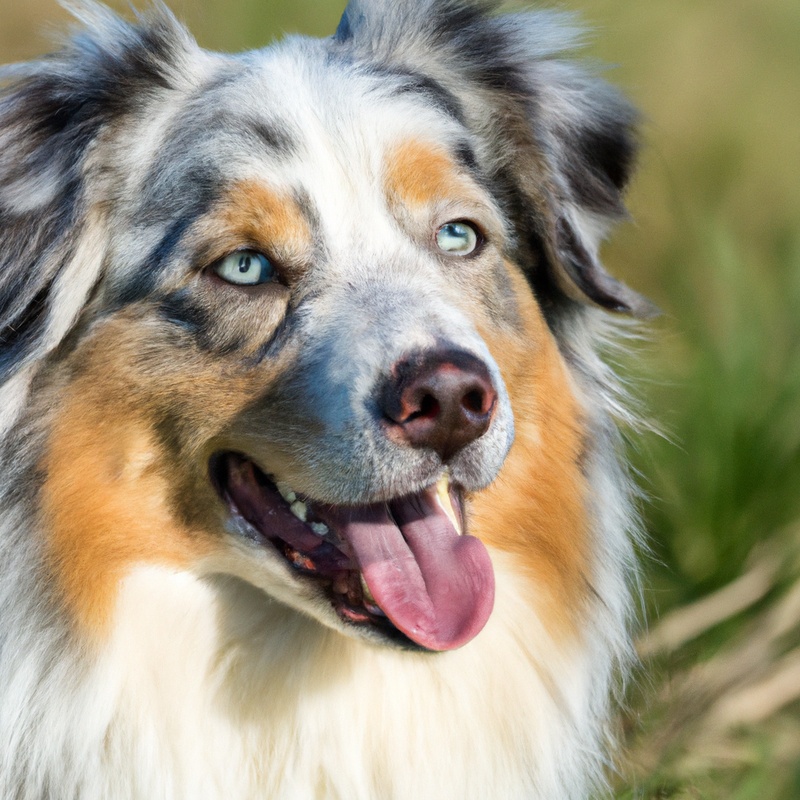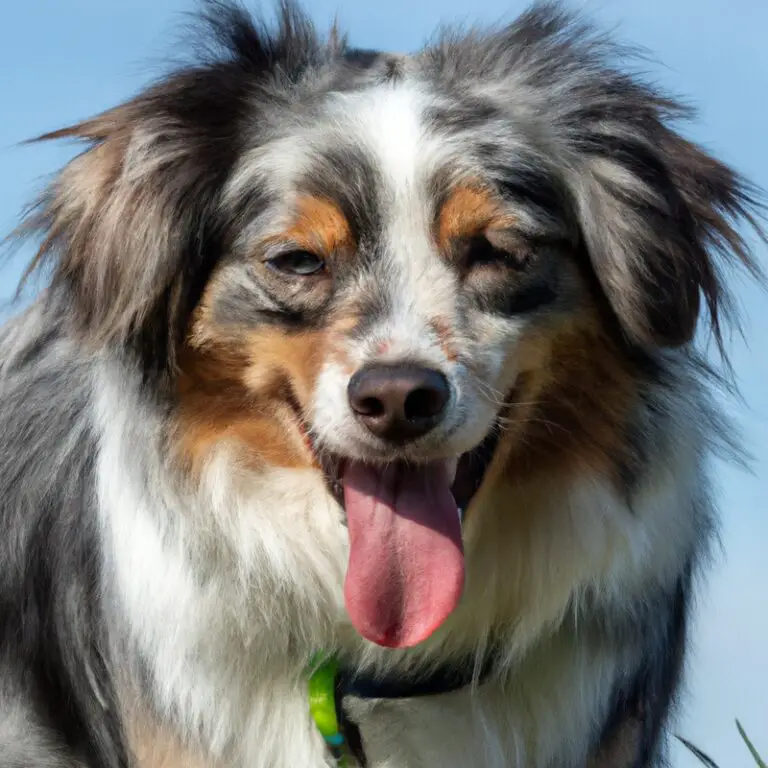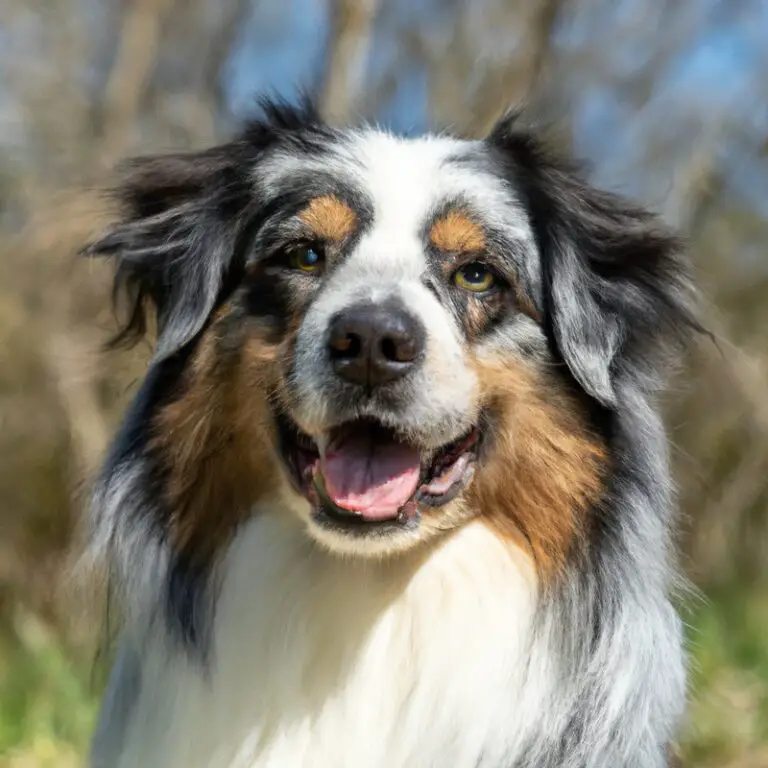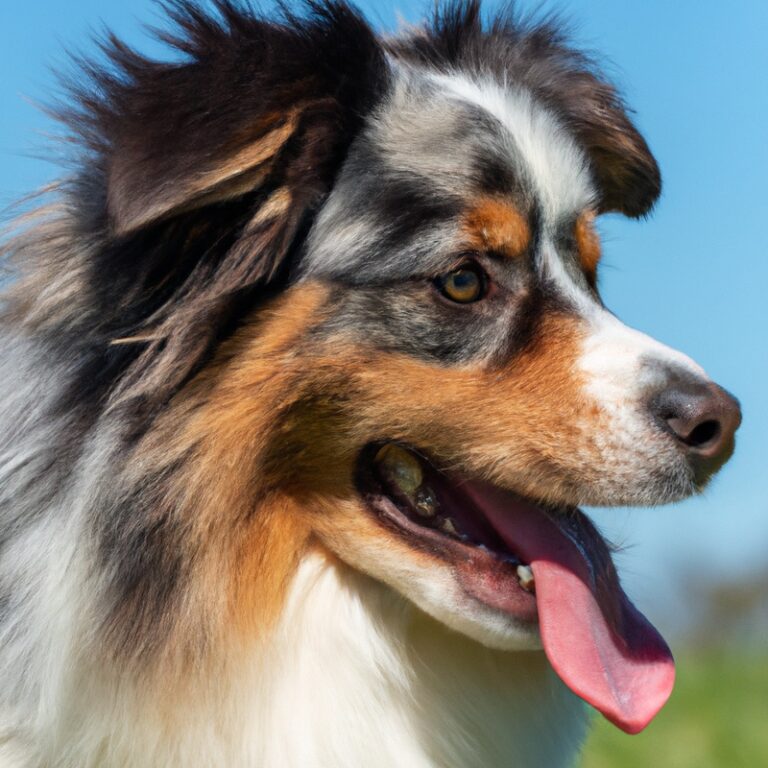How Do Australian Shepherds Handle Being Left Alone In a Backyard With a Pool?
Key Takeaways:
- Australian Shepherds generally handle being left alone in a backyard with a pool quite well.
- They are typically intelligent and adaptable, making them comfortable in various environments.
- Proper training and socialization play a crucial role in ensuring their safety and well-being.
- Providing mental stimulation and physical exercise can help prevent boredom and potential behavior issues.
Do you ever wonder how your Australian Shepherd copes with being left alone in the backyard with a pool? As an expert on dog behavior and training, I’m here to shed some light on this topic and provide you with valuable insights.
Australian Shepherds are known for their energetic and intelligent nature, which can pose challenges when left alone for extended periods.
However, with the right precautions in place, such as regular exercise, mental stimulation, and a secure backyard environment, you can ensure your furry friend stays happy and safe. Stick around to learn more about how to handle this situation and make your Australian Shepherd’s alone time a positive experience.
| Left Alone with a Pool | Australian Shepherds |
| Behavior with a pool | May enjoy water activities and swimming |
| Energy level | High energy breed, requires mental and physical stimulation |
| Swimming ability | Excellent swimmer, natural ability |
| Water safety | May need supervision, particularly with unsupervised access to the pool |
| Precautions | Should be taught pool safety and have controlled access to the pool area |
Australian Shepherds’ Temperament
Energetic and Intelligent Breed
Australian Shepherds are known for being an energetic and intelligent breed. They have a lot of energy and love to stay active.
These dogs are highly intelligent and thrive on mental stimulation.
They need daily exercise to keep them physically and mentally satisfied. This can include activities like long walks, runs, or playing fetch.
Australian Shepherds excel at learning new commands and tricks because of their intelligence.
They are quick learners and are eager to please their owners. Training and providing mental stimulation activities, such as puzzle toys and obedience training, can help keep their minds sharp and prevent boredom.
Australian Shepherds need a lot of mental and physical stimulation to be happy and healthy.
Bonding and Socialization Needs
Bonding and socialization are essential for Australian Shepherds. As a breed known for their deep loyalty and love for their owners, Australian Shepherds thrive on strong bonds with their human family.
Regular socialization helps them develop into well-rounded and confident dogs.
One way to bond with your Australian Shepherd is by spending quality time together. This can involve activities like daily walks, playing games, or teaching them new tricks.
Regular positive reinforcement during training sessions can also strengthen your bond.
In terms of socialization, it’s important to expose your Australian Shepherd to different people, animals, and environments from a young age. This helps them become comfortable and adaptable in various situations.
Taking them to obedience classes or organizing playdates with other friendly dogs can also contribute to their social skills.
Additionally, engaging in activities that cater to their natural herding instincts, such as agility training or participating in dog sports, can be a great way to provide mental stimulation and enhance the bond between you and your Australian Shepherd. Remember, building a strong bond and providing ample socialization opportunities are key to raising a happy and well-adjusted Australian Shepherd.
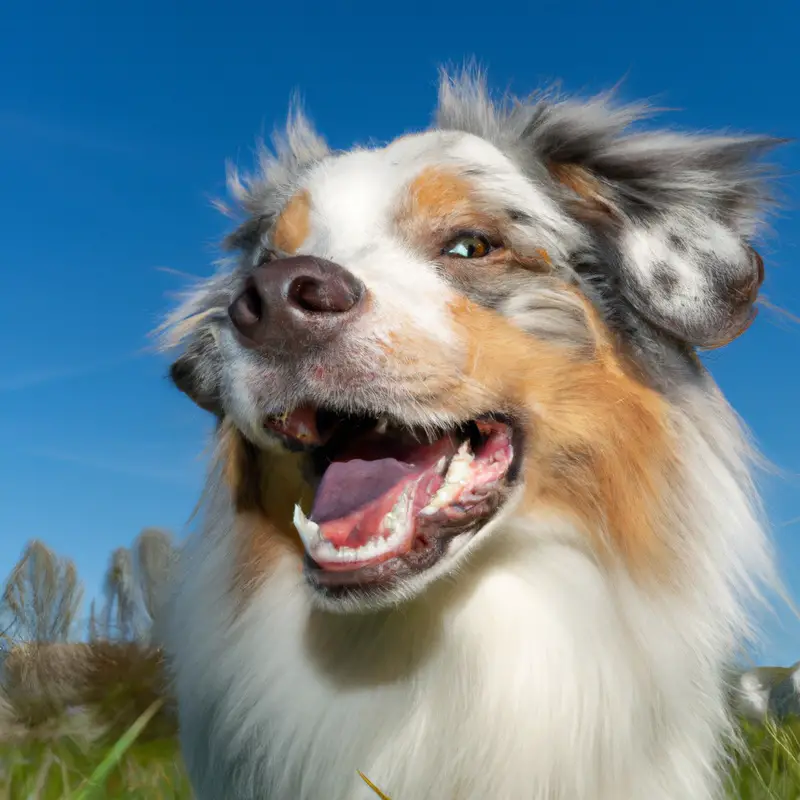
Handling Australian Shepherds Being Left Alone
Regular Exercise and Mental Stimulation
Regular exercise and mental stimulation are essential for Australian Shepherds. These energetic and intelligent dogs need daily physical activity to keep them healthy and happy.
This can include long walks, jogging, playing fetch, or engaging in dog sports like agility or flyball.
Mental stimulation is just as important to prevent boredom and destructive behavior. Give them puzzle toys, teach them new tricks, or use interactive treat dispensers to challenge their minds.
A tired and stimulated Australian Shepherd is a content and well-behaved dog.
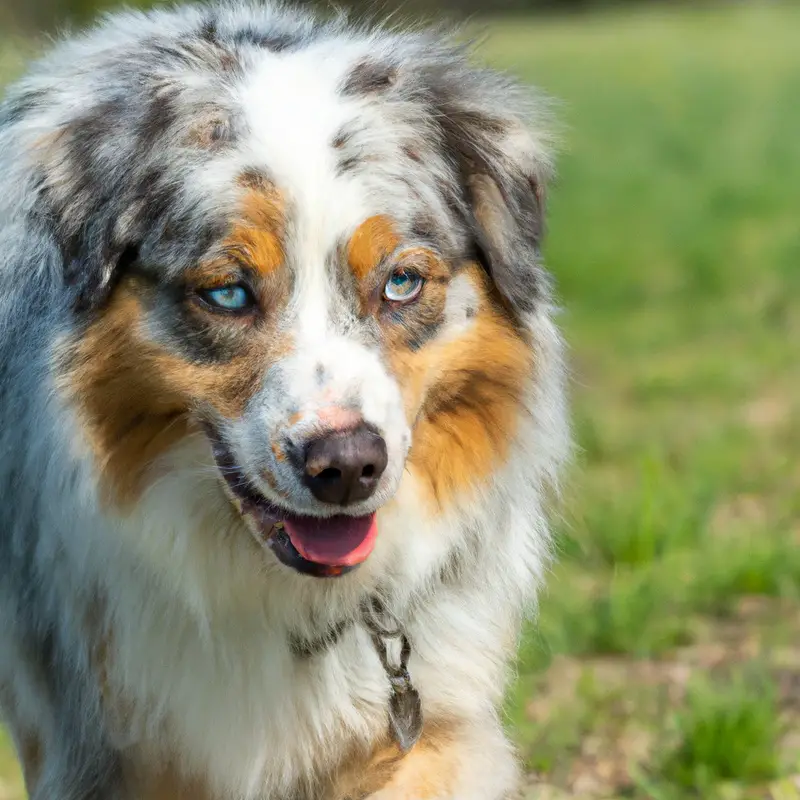
Providing a Safe and Secure Backyard Environment
When it comes to providing a safe and secure backyard environment for your Australian Shepherd, there are a few key things to keep in mind. First, make sure your backyard is securely fenced to prevent your dog from escaping.
Regularly check for any holes or gaps in the fence and repair them promptly.
Next, remove any potential hazards or toxic plants from the yard. Australian Shepherds are curious by nature, so it’s important to keep dangerous substances and objects out of their reach.
Also, provide shaded areas and fresh water to ensure your dog stays cool and hydrated.
Creating a stimulating environment is also crucial for an Australian Shepherd’s mental and physical well-being. Provide plenty of interactive toys, puzzle games, and access to a variety of textures and surfaces.
This will help keep your dog entertained and prevent boredom and destructive behavior.
Lastly, consider installing a secure gate or barrier around your pool area, especially if you leave your Australian Shepherd alone in the backyard. This will prevent accidental drownings and ensure that your dog stays safe.
Training and Socializing
Training and socializing are essential for Australian Shepherds. It helps them develop good behavior and become well-rounded dogs.
Training should start early and be consistent.
Teaching basic commands like sit, stay, and come will establish boundaries and make it easier to manage them. Positive reinforcement, such as treats and praise, works best with this breed’s intelligence and eagerness to please.
Socialization is crucial for Australian Shepherds to interact well with other dogs and people.
Expose them to different environments, sounds, and situations to help them feel comfortable and confident. Regular playdates, obedience classes, and visits to dog-friendly places are great ways to socialize them.
Remember, training and socialization are ongoing processes.
Be patient and consistent, and your Australian Shepherd will grow into a well-behaved and sociable companion.
Using Toys and Interactive Treat Dispensers
To keep your Australian Shepherd entertained and mentally stimulated while you’re away, using toys and interactive treat dispensers can be a great solution. These toys can provide both physical and mental exercise, keeping your pup engaged and preventing boredom.
You can choose from a variety of toys, such as chew toys, puzzle toys, and treat-dispensing toys.
These toys can keep your Australian Shepherd occupied for hours while also rewarding them with treats as they solve puzzles or play with the toys. Just be sure to select toys that are safe and durable for your energetic and intelligent breed.
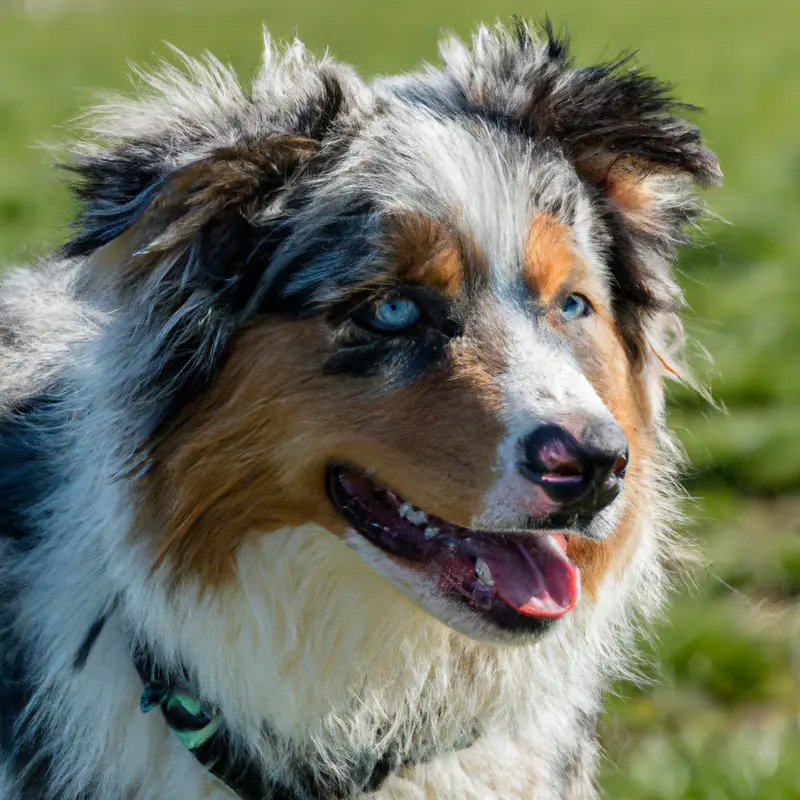
Safety Precautions with Backyard Pool
Australian Shepherds’ Swimming Abilities
Australian Shepherds are generally good swimmers. They have a natural instinct for swimming and are known to enjoy water activities.
Their athletic build and strong legs enable them to move through the water with ease.
However, it’s important to note that not all Australian Shepherds are confident swimmers, and some may require training and encouragement to become comfortable in the water. Safety precautions should always be taken when allowing your Australian Shepherd to swim, such as closely supervising them and providing them with a life vest if needed.
Supervision and Pool Safety Measures
When it comes to ensuring the safety of your Australian Shepherd around a backyard pool, supervision is key. It’s crucial to always keep a close eye on your dog when they are near or in the pool.
Never leave them unattended, even for a moment.
Accidents can happen in an instant. In addition to supervision, there are some pool safety measures you can implement to protect your Australian Shepherd.
Here are a few important ones:
- Secure the pool area: Make sure your backyard pool is properly fenced off or enclosed to prevent your dog from accessing it when unsupervised. The fence should be high enough to prevent jumping and have a self-latching gate.
- Provide a pool exit: If your dog accidentally falls into the pool, ensure there’s an easy way for them to exit. Consider installing a dog-friendly ramp or steps that they can use to swim out.
- Teach them where to exit: Train your Australian Shepherd to locate and use the designated pool exit. You can do this by guiding them to the exit and rewarding them with treats and praise when they successfully navigate their way out.
- Use pool alarms: Install a pool alarm system that alerts you when someone or something enters the pool area. This can provide an extra layer of safety and give you peace of mind.
Signs of Distress or Anxiety
Separation Anxiety in Australian Shepherds
Separation anxiety is a common issue in Australian Shepherds. These dogs are highly affectionate and bond strongly with their owners, which can make it difficult for them to be left alone.
When you leave your Australian Shepherd alone, they may display signs of distress, such as excessive barking, destructive behavior, or even self-harm.
Managing separation anxiety involves gradually getting your dog used to being alone. Start by leaving them alone for short periods and gradually increase the duration over time.
Providing them with toys, puzzles, and interactive treat dispensers can help distract them and keep them entertained.
It’s also important to create a safe and comfortable environment for your Australian Shepherd when you’re not home. Make sure they have access to their bed or crate, as well as plenty of fresh water.
Leaving some of your clothing with them can also help soothe and comfort them.
It’s worth noting that every dog is unique, and what works for one Australian Shepherd may not work for another. If your dog’s separation anxiety is severe, it may be beneficial to seek professional help from a dog trainer or behaviorist who specializes in anxiety disorders.
Remember, separation anxiety can be managed with patience, consistency, and understanding.
With the right approach and support, you can help your Australian Shepherd feel more secure and comfortable when left alone.
Behavioral Indicators of Stress
Behavioral indicators of stress in Australian Shepherds can vary from dog to dog, but there are some common signs to look out for. One of the most noticeable indicators is excessive barking or howling.
If you notice your Australian Shepherd barking excessively when left alone in the backyard with a pool, it may be a sign of distress.
Other indicators include destructive behavior, such as digging or chewing on furniture, excessive pacing, and attempting to escape from the yard. Some dogs may also develop separation anxiety, which can manifest in behaviors like drooling, panting, or urinating indoors.
It’s important to pay attention to these signs and take appropriate measures to address your dog’s stress levels.
Seeking Professional Help
Dog Sitters or Doggy Daycare Services
When you need to ensure the well-being of your Australian Shepherd while you’re away, dog sitters or doggy daycare services can be a great option. These services provide a safe and supervised environment for your dog while giving them the opportunity to socialize with other dogs.
Dog sitters can come to your home and take care of your Australian Shepherd, providing companionship and exercise.
Doggy daycare services, on the other hand, offer a structured program with activities and playtime. When choosing a dog sitter or doggy daycare, it’s important to do your research.
Look for experienced professionals who have a good understanding of the Australian Shepherd breed.
Check reviews and ask for recommendations from other dog owners. Make sure to meet the dog sitter or visit the daycare facility beforehand to assess the environment and see if it’s the right fit for your dog.
Ask about their safety protocols, daily routines, and how they handle any emergencies that may arise.
Dog sitters and doggy daycare services can provide peace of mind knowing that your Australian Shepherd is in capable hands and having a great time while you’re away.
Hiring a Professional Trainer
Hiring a professional trainer can be a great option when it comes to helping your Australian Shepherd adjust to being alone in the backyard with a pool. A trainer has the expertise and knowledge to assess your dog’s behavior and provide appropriate training techniques.
They can help your dog develop coping mechanisms and teach them how to safely navigate the backyard and pool area.
A trainer can also assist in addressing any separation anxiety or fear-related issues your dog may have. By seeking professional help, you can ensure that your Australian Shepherd receives the guidance and support they need to thrive in their outdoor environment.
Final Verdict
Australian Shepherds are energetic and intelligent dogs that require mental stimulation and regular exercise. When left alone in a backyard with a pool, it is crucial to provide a safe environment and supervision to prevent accidents.
Additionally, signs of distress or anxiety should be closely monitored, as Australian Shepherds can experience separation anxiety.
Seeking professional help, such as dog sitters or trainers, can be beneficial in ensuring the well-being of these amazing dogs. Remember, with proper care and attention, Australian Shepherds can thrive even when left alone.

